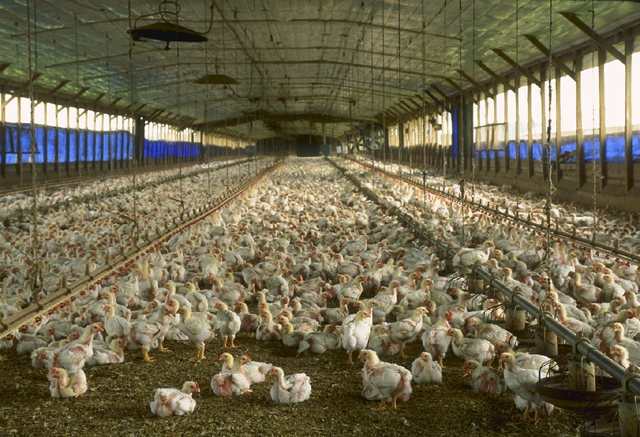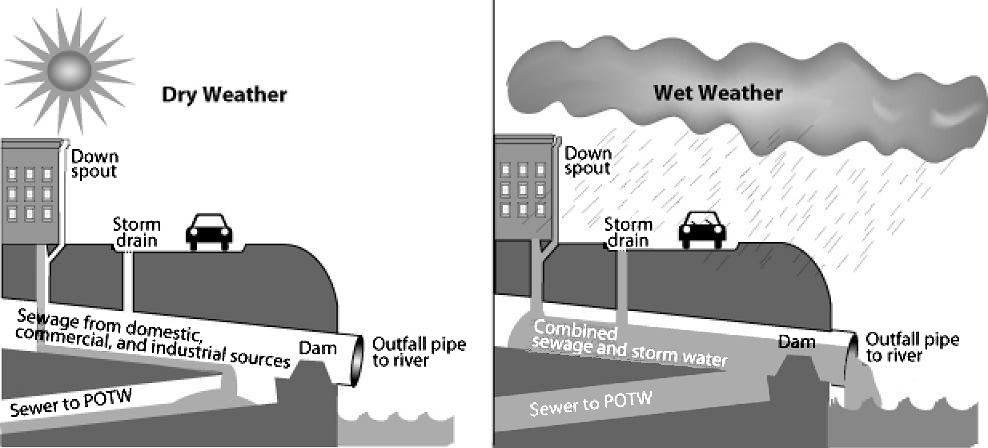| << Chapter < Page | Chapter >> Page > |


Oxygen-demanding waste is an extremely important pollutant to ecosystems. Most surface water in contact with the atmosphere has a small amount of dissolved oxygen, which is needed by aquatic organisms for cellular respiration. Bacteria decompose dead organic matter (chemically represented in a simplified way as CH 2 O) and remove dissolved oxygen (O 2 ) according to the following reaction:
Too much decaying organic matter in water is a pollutant because it removes oxygen from water, which can kill fish, shellfish, and aquatic insects. The amount of oxygen used by aerobic (in the presence of oxygen) bacterial decomposition of organic matter is called biochemical oxygen demand (BOD). The major source of dead organic matter in most natural waters is sewage; grass and leaves are smaller sources. An unpolluted water body with respect to oxygen is a turbulent river that flows through a natural forest. Turbulence continually brings water in contact with the atmosphere where the O 2 content is restored. The dissolved oxygen content in such a river ranges from 10 to 14 ppm O 2 , BOD is low, and clean-water fish, e.g., bass, trout, and perch dominate. A polluted water body with respect to oxygen is a stagnant deep lake in an urban setting with a combined sewer system. This system favors a high input of dead organic carbon from sewage overflows and limited chance for water circulation and contact with the atmosphere. In such a lake, the dissolved O 2 content is ≤5 ppm O 2 , BOD is high, and low O 2 -tolerant fish, e.g., carp and catfish dominate.
Excessive plant nutrients , particularly nitrogen (N) and phosphorous (P), are pollutants closely related to oxygen-demanding waste. Aquatic plants require about 15 nutrients for growth, most of which are plentiful in water. N and P are called limiting nutrients , because they usually are present in water at low concentrations and therefore restrict the total amount of plant growth. This explains why N and P are major ingredients in most fertilizer. High concentrations of N and P from human sources (mostly agricultural and urban runoff including fertilizer, sewage, and P-based detergent) can cause cultural eutrophication , which involves the rapid growth of aquatic plants, particularly algae, called an algal bloom . Thick mats of floating and rooted green or sometimes red algae (see Figure Algal Bloom in River in Sichuan, China ) create water pollution, damage the ecosystem by clogging fish gills and blocking sunlight, and damage lake aesthetics by making recreation difficult and creating an eyesore. A small percentage of algal species produce toxins that can kill fish, mammals, and birds, and may cause human illness; explosive growths of these algae are called harmful algal blooms (see Figure Harmful Algal Bloom ). When the prolific algal layer dies, it becomes oxygen-demanding waste, which can create very low O 2 water (<~2 ppm O 2 ), called hypoxia or dead zone because it causes death to organisms that are unable to leave that environment. An estimated 50% of lakes in North America, Europe, and Asia are negatively impacted by cultural eutrophication. In addition, the size and number of marine hypoxic zones have grown dramatically over the past 50 years (see Figure Aquatic Dead Zones ), including a very large dead zone located offshore Louisiana in the Gulf of Mexico. Cultural eutrophication and hypoxia are difficult to combat, because they are caused primarily by nonpoint source pollution, which is difficult to regulate, and N and P, which are difficult to remove from wastewater.

Notification Switch
Would you like to follow the 'Sustainability: a comprehensive foundation' conversation and receive update notifications?